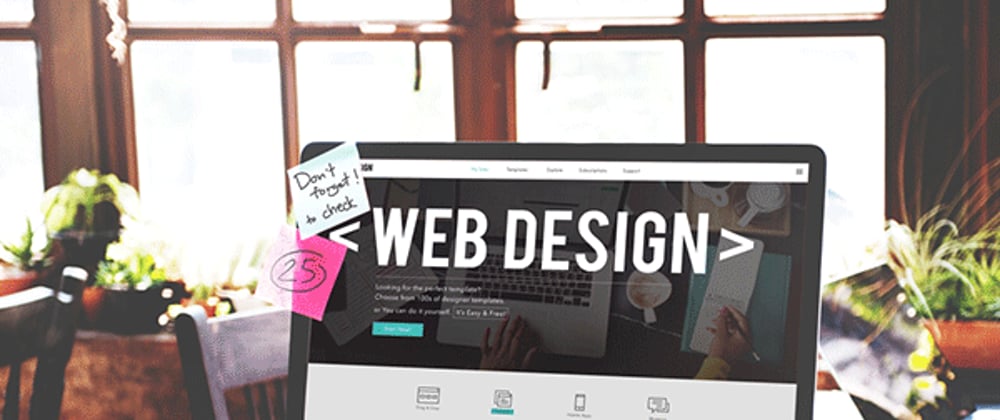When it comes to creating anything functional and compelling, there are some standards one must follow in order to successfully complete a project. Similarly, when designing a website, it’s not just about the visual design that makes it accessible, but the usability and adaptability as well. The appearance is just one principle among several other key factors that decide whether your website is a success or a failure.
You might think you’ve done your part in designing a strong website, but the only judgment that matters is that of the end-user. If the foundation of your web design is shaky, then you’re likely going to encounter endless issues once the website goes live. When the website performs poorly, your bounce rate will be high, and Google rankings will remain low.
There needs to be a balance between visuals, content, and navigation for a website to generate positive conversions and gain steady traffic. To help you achieve momentum, we’ve compiled 10 web design principles that every designer should know.
10 Principles of Good Web Design
1. Purpose Is the Cornerstone of Any Web Design
The main outlook of your webpage will be related to the topic you are making it on. Whether it is about business, health, education, leisure, or lifestyle, designing your web page needs to be specified according to the type of context you are working on. This also depends on the kind of audience you are engaging with. Dividing your webpages into small goals will make it easier for a web designer as he/she will know how to format the webpage according to the instructions given. Being aware of what you need to do will enable you to fit all the pieces of a puzzle together, thus making your website organized, laying the foundation for a strong website. Recognizing the kind of resources that you will provide through your website to your end-user will make your task more efficient.
2. Prioritize Compelling Visuals and Graphics
A webpage crammed with text will make your website look displeasing as no one likes to read a whole webpage filled with text. Using eye-catching labels and images where the description of your content can be reduced is a good strategy to opt for. Information given in the form of visuals, graphics, and imagery can make it easier for the reader to grasp and memorize important information. Short videos for providing clarity also make it easier for conveying the message to the audience. Proper usage of background color, text, and images will retain the audience’s attention and cause them to return to your website frequently.
3. Content Is Everything - Make It Informative and Engaging
Anyone who surfs through the internet looks for the right kind of information that would help them find the solution to their problem. Once they come across a website, they scan the text to see if there’s anything that directly addresses their needs. The designer must bear in mind that while the design is important, what’s inside the website plays a major role in attracting steady traffic.
For instance, if your site offers website and logo design consultation, then it should be to the point and not consist of filler content that strays readers from the actions you want them to take. This means including top quality, intriguing, and educational content that successfully captures the attention of readers and conveys an important message. While appeasing your audience with great content, integrate the right SEO practices within your text as well. SEO should be tastefully interlaced within the content as not to disturb the flow and tone.
4. There Is Beauty in Simplicity
Users that are seriously searching for information will barely have time to pay attention to the design. Don’t get carried away, creating a complex layout or design that confuses the visitor and makes it difficult to navigate. Users will remember your website by the quality of the user experience you provide. Make sure that you present essential information in a simple yet attractive fashion that convinces the reader to perform the desired action.
5. Choose Typography Wisely
The fonts you choose should reflect the tone and purpose of the web design. Ultimately, it all comes down to harmony and how the website looks when the visuals, colours, layout, typeface, etc. all come together. In this case, selecting the wrong font can devalue your content and create a non-serious impression.
Cursive or other fancy fonts can be used to add some flavor and flair to the website but must be used scarcely. Whereas contemporary fonts such as Arial and Verdana increase readability and clarity, so they’re more commonly used in web design and content.
6. Implement A Practical Page Hierarchy
The visual hierarchy is something a designer should never mess up as it can easily increase your bounce rate and negatively impact Google rankings. Focus on following a simple site navigation methodology to boost usability and user satisfaction. You can’t have users leaving your website because it feels too overwhelming. Keep things searchable and easy to use for better user experience.
7. Always Go for Mobile-friendly Web Design
Every good designer knows the importance of mobile-friendly websites. Most people access the web on more than just one device, which makes it necessary for designers to prioritize screen size adaptability - websites that fail to optimize their pages for mobile consumers, neglect a large chunk of their audience, and lose precious leads.
8. Add Some White Space
When designing a website, you wish to develop a communication pattern that ensures the end user’s experience is smooth and uninterrupted. Including white spaces in your layout and design can help you achieve a nice balance. Finding a balance between visual elements can be challenging, but adding white space can make your content more digestible. It’s like breaking down important information into bite-size pieces ready for consumption.
9. Select A Color Palette That Reflects Your Brand
A professional designer ensures that the website’s color palette complements the general vibe of your products and brand. Before diving in to make sure everything looks good, spend time to envision how the final product should look and whether you’d enjoy exploring a website like that. Don’t try to stuff too many colors into one page, instead select a color palette that is pleasing on the eyes of the reader. Try to find a balance between contrasting colors that make your text pop and creates a seamless and enjoyable user experience.
10. Loading Time Is Vital
Nothing turns away users faster than a website that takes forever to load. People don’t have the patience to wait for webpages to load. Just getting your website to work isn’t all there is to design a website; you need to make the required enhancements to ensure it’s at top performance. The loading speed is a critical part of every web design. Designers must focus on strong optimization techniques to improve the loading time and grow conversions. Google has no room for websites that take a long time to load, so if your traffic has dropped recently, then it’s time to take a look at your webpage loading speeds.
In a Nutshell
Once you’ve understood the significance of these principles, web design will come easily to you. Implement and test these standards on every web project to evaluate the functionality and usability of the website. This will provide crucial insights that can be a valuable learning experience in web design.







Top comments (0)